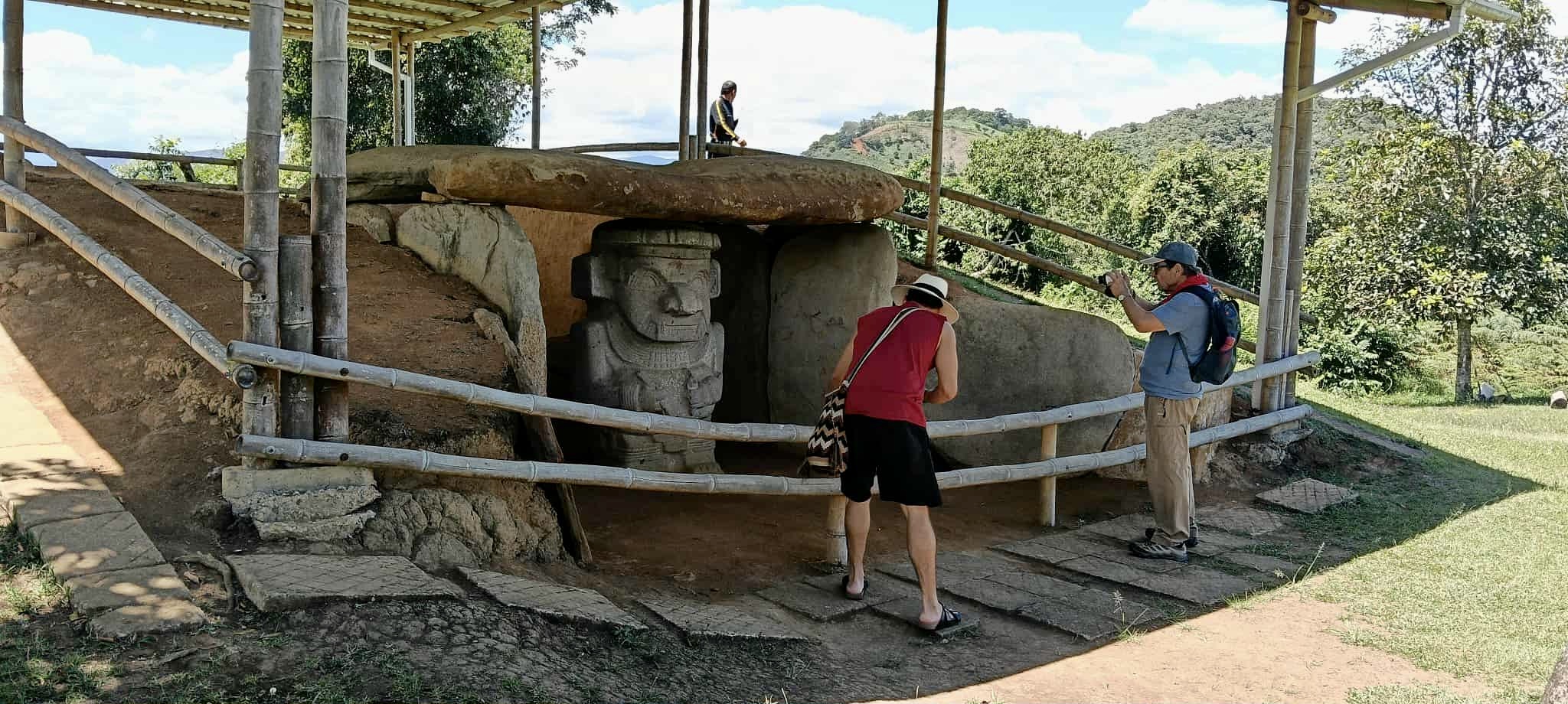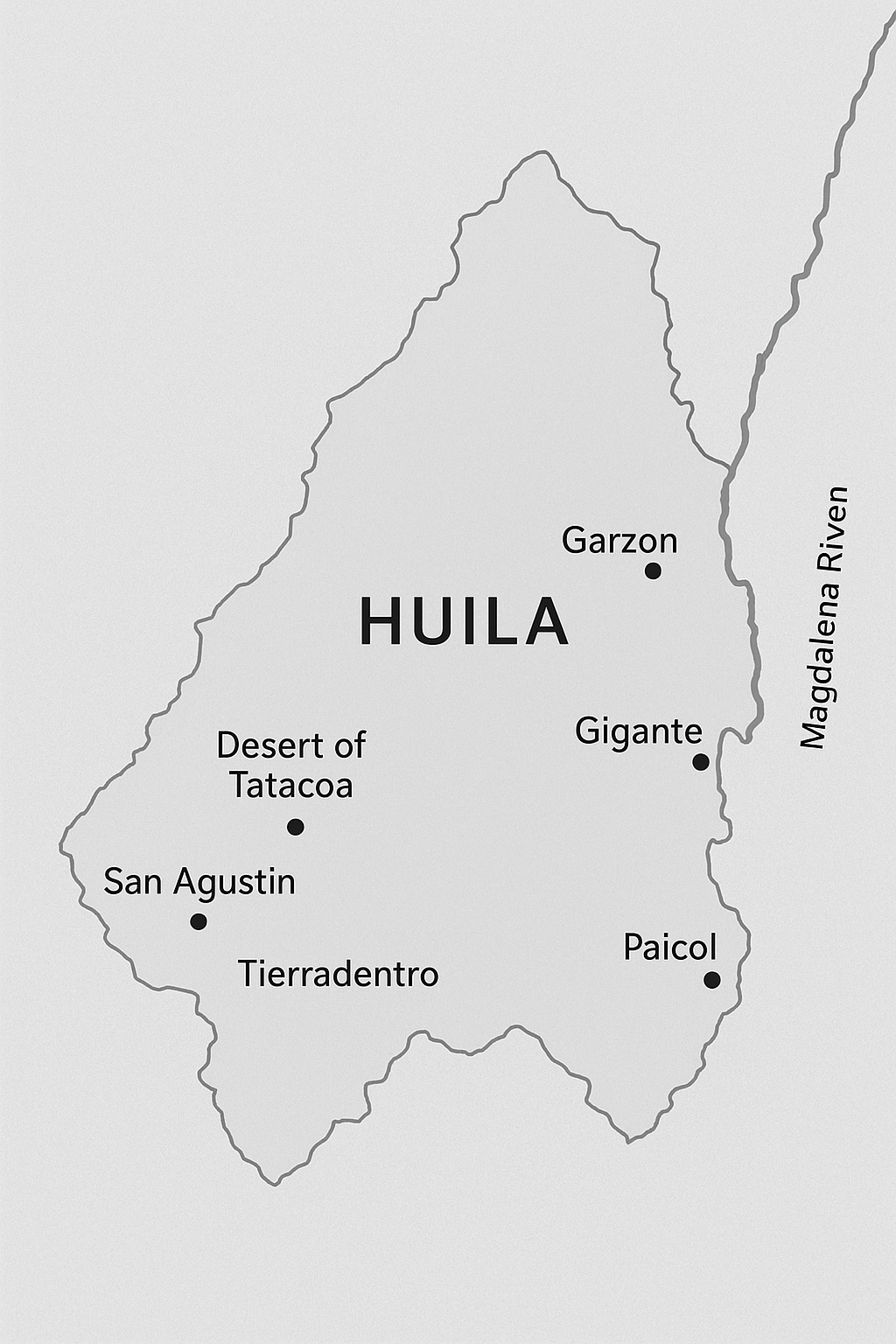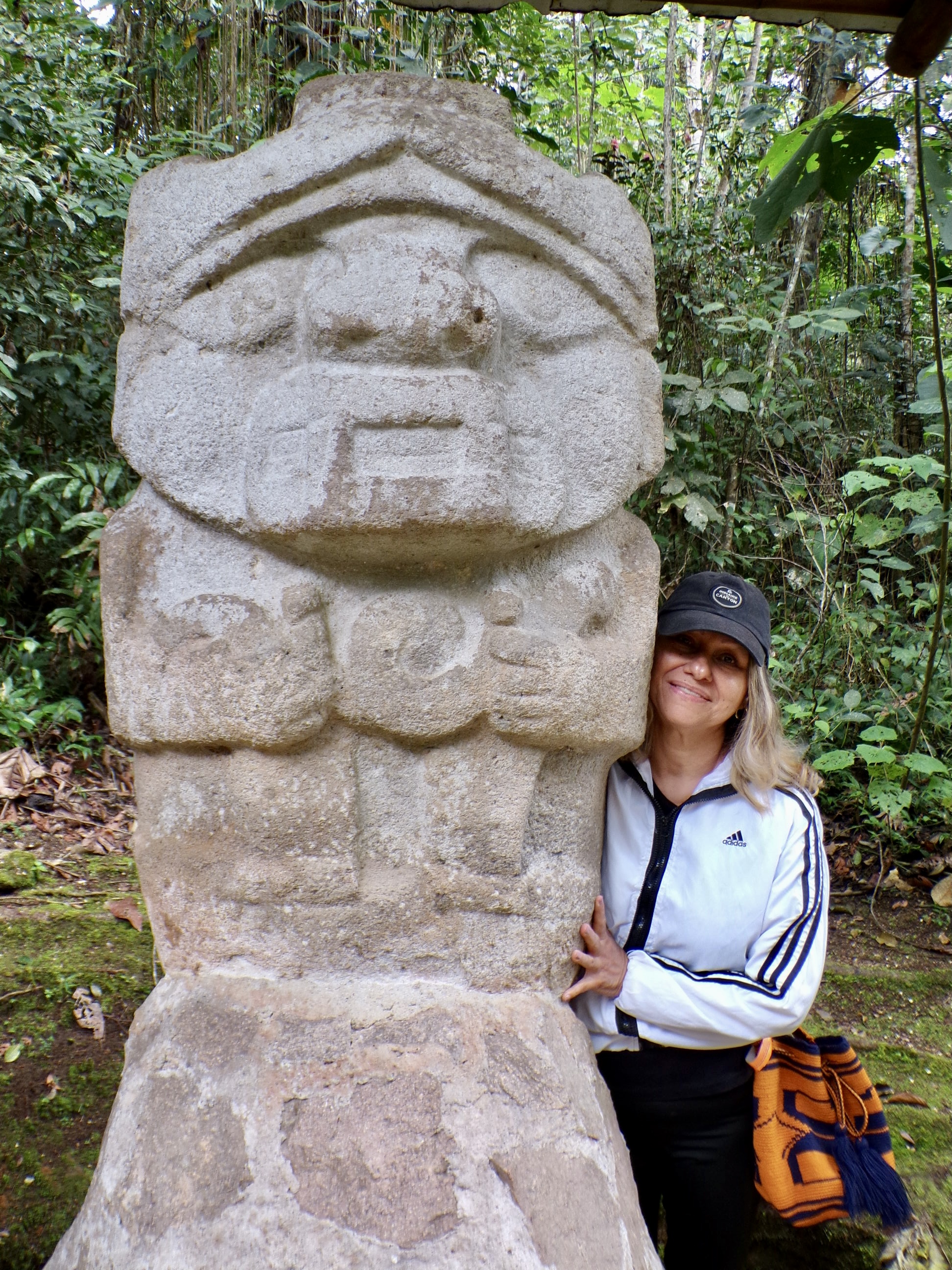Jon McInnes





Colombia has a number of ancient ruins throughout the country but the two most important archaeological sites are found in the southern departments of Huila and Cauca where stone statues and deep tombs are rooted in countryside's mountaintops. Located a day’s travel, one from the other, are the pueblos of San Agustin and Tierradentro. Both are UNESCO World Heritage sites.

San Agustin - is a pleasant country village in Huila where one can explore Colombia’s finest archaeological patrimony immersed in some of Colombia's most beautiful rural landscape. The park and surroundig sites contain the largest collectton of megalithic sculptures in Latin Amerrica and is considered the world´s largest necropolis.
A few thousand years ago the people who lived in this area adorned their tombs with statues of god heads, devilish images, men in trances and man/animal figures. They believed these were creatures bridging the world of man and animals. The animal traits can be seen in the statues eyes, canine teeth and hands.
Believing mountain tops to be very sacred places, incredible statues were brought to guard the tombs of kings and warriors dug into the mountain ridges near the town of San Agustin. Today these statues and tombs are preserved in several archaeological parks located around the village.

Tierradentro - located in the department of Cauca and only a day's travel from San Agustin is known for its pre-Colombian tombs.
There are 162 subterranean tombs located in 4 different sites dating back to the 6th to 9th centuries A.D. Carved into volcanic rock the tombs open to the west. Spiral staircases lead to a main chambers 15 to 24 feet below the surface. The main rooms are 30-36 feet wide with supporting columns and small walled chambers where bodies were buried. The walls were scored with geometric patterns and painted red, black and white; red representing life, black death and white the hope of passing to the next life.

Farmers found most of the statues around San Agustin in the 1800s while plowing and digging in their fields. The main park, San Agustin Archaelogical Park, just outside of the village, was created in 1931 to protect the statues and tombs from looters. The area had already been heavily looted over the years prior by gold diggers searching for gold and other precious metals.
The 1980s – 1990s brought political turmoil and unstable times to this semi-isolated area. The park fell victim, once again, to widespread theft and trafficking of archaeological artifacts. And while many statues have been found in the art collections in private villas throughout the Americas and Europe, only a few have been brought back by the Colombia Institute of Anthropology.
People have been inhabiting this steep terrain for 6,000 years. And these tombs and statues were created around 3,300 B.C. - about the time they were building the pyramids in Egypt; well before the Incas, whose civilization arose in the 13th century and was thriving when Columbus discovered the Americas.

Why were these tombs and statues built? Who built them? Little is known about these cultures or what happened to these ancient Colombian civilizations. Like most of the ancient civilizations in the Americas they just disappeared or were annihilated before anyone could understand their beliefs and ways of life.
To enter the park it costs about $20 per person - 80,000 COP. 65,000 COP for Colombians with discounts for seniors. They issue a wrist band which is good for 2 days and can be used to enter the park Alto de los Idolos on the jeep tour.
Leave another day for a day long jeep tour of the outlying archaeological sites – Alto de los Idolos, Alto de las Piedras and the Museum of Obando. The jeep tour (which costs around $100 for the jeep and guide for the day - can be split amongst the people taking the tour.

Be careful of tour offices in town. Somtimes they will play you. They tell you they have more people going on the tour the next day and the cost of the jeep tour will be only $10 - 15 per person. But then in the morning when they pick you up in the a.m. take you up in the hills to hotel to pick up the other passengers but then tell you the people who were suppose to go on the tour with you had left early and won't be going - or paying. They then leave you with a choice of either paying for the cost of the jeep and driver-guide - more than $100 - 400,000 - 500,000 COP for a private tour or be taken back to your hotel thowing a wrench in your plans for the day.
Nothwithstanding, the jeep tour is well worth it. Passing through an incredible landscape of mountains, gorges, coffee and sugar cane farms - the guides are quite informative.
The jeep tour used to go to the beautiful waterfalls of Alto di Bordones and Salto di Mortino, but due to guerilla activity in that area they no longer go up there and instead go the the waterfalls of Salto Mortino. Let's hope they reopen Alto Bordones soon. There was an incredible hotel and restaurant up there which they now tell me is closed.
The tour also goes to visit the head waters of the Rio Magdalena the most important river in Colombia. It originates in a lake in the mountains above San Agustin and flows all the way to the Caribbean.
One could add a third day to rent a horse and see the sites of El Tablon, La Pelota and La Chaquira – all located just outside of San Agustin. The 7 mile trek can also be done on foot.
see post: Exploring the Ecological Sights of San Agustin on Horseback

San Agustin has a wide variety of hotels, hostels and eco-tourism farms in and outside of the town. The lodgings range from inexpensive to expensive.
Having visited the town many times before one gets the feeling that tourism has declined and changed somewhat in the last few years as a lot of hotels and restaurants are closed or up for sale. I'm sure the place is hopping during the holdiays.
One can stay in town for as little as $10 a night or rent one of the boutique hotels in the countryside just outside of town for up to $100 a night per room. There are a number of hotels and hostels on the road going from the town to the park along with a number of good restaurants and shops selling arts and crafts.
To get there - Located in southern Colombia, one can arrive at San Agustin by way of Cali and Popayan. It’s a 5 hour bus trip from Popayan which goes over the Cordillera Occidental mountains into the paramo and through the National Park of Purace. The trip though the paramo park is beautiful but the dirt road is overgrown by jungle and one can only catch an occasional glimpse of the park’s spectacular foilage, valleys and impenetrable jungle through the trees. Tours to the park can be found in Popyan.
There are buses leaving Popayan going directly to the center of San Agustin. But other buses from Popayan go to Pitalito which will leave you at a crossroad just short of San Agustin. Here you must flag down ‘collectivo’ jeep or bus for the final 5 minute trip to the town of San Agustin.
One could also come from the north through the valley between the Cordilleras Occidental and the Cordilleras Oriental by way of: Bogota – El Espinal – Neiva and Pitalito - passing the Tatacoa dessert and the road to Tierradentro.
Or if one is visiting the gateways to the Amazon one can reach San Agustin by bus from the towns of Mocoa and Florencia. From Mocoa one can take a bus to Pasto and onto Ecuador.

